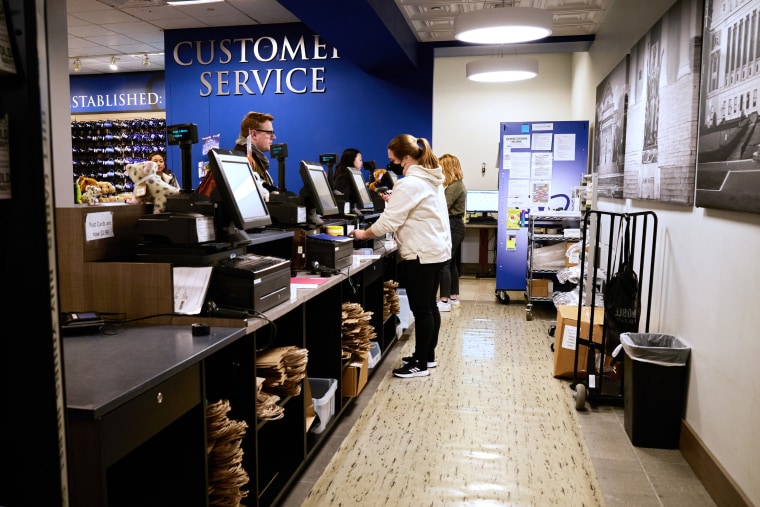It’s not just you: More U.S. customers than ever before report experiencing product and service problems.
That’s according to the National Customer Rage Survey, a study of 1,000 respondents that has its roots in an official White House review of consumer sentiment dating to 1976.
That year, researchers found 32% of Americans had experienced issues in the consumer marketplace in the previous 12 months.
This time around, the figure has increased to 74%, up from 66% in 2020, the last time the study was conducted.
A key problem, said co-author Scott Broetzmann, is that many products and services are just more sophisticated and interconnected these days, thanks in part to technology.
“If the internet goes down, our household grinds to a halt,” said Broetzmann, the president and CEO of Customer Care Measurement and Consulting, which conducted the survey online in January in partnership with Arizona State University business school researchers. “These types of products are now woven into everyday life, and they are of a more technical and complex nature.”
Vehicles, for example, have become higher-tech in the past few decades, Broetzmann said, so they’re no longer so easily fixed.
“Computers/internet” and “automobiles” were the two categories with the greatest concentration of complaints, with 14% and 13% of respondents reporting problems, respectively. The researchers noted that issues were most common in core “lifestyle” products and services — the ones “that are relied upon to get through each day.”

Broetzmann said an aggravating factor is the tight labor market, in which many employers are still struggling to hire enough experienced, qualified workers.
“The problems are creating this groundswell that’s overwhelming companies and organizations that then have to try and effectively respond to them,” he said.
Around 10.8 million job openings remained unfilled across the country as of January, federal data released Wednesday showed, down from a record peak of more than 12 million last March.
A more regularly released survey of consumer behavior also finds customer satisfaction at decadeslong lows. The American Customer Satisfaction Index, which looks at more than 400 companies across 47 industries, stood at 73.4 out of 100 as of the final quarter of last year.
Although the index recently increased — a modest 0.3% uptick from 2021 after several consecutive years of declines — it remains well below the highs in the last decade.
“You’ve got a really difficult labor market [for] companies relying on human service intervention,” said Forrest Morgeson, the director emeritus of research at the ACSI.
Pay has risen nationwide as employers compete for workers amid high inflation, with lower-income people enjoying some of the biggest gains. But the median annual income for U.S. customer service representatives was just $36,920 in 2021, the latest year covered by federal data — compared with $45,760 for all workers at the time.
Morgeson said that with the economy still adding jobs at a rapid clip, many “front-line service personnel have moved into other positions, leaving them open or with less well-trained people.”
Consumers’ reactions to the issues they face are also getting more aggressive, the rage study found, with 43% of respondents saying they yelled or raised their voice about their most serious problem, up from 35% in 2015.
Broetzmann said that isn’t an effective way to get results.
“Follow the model of ‘catching more bees with honey,’” he advised. “If you demonstrate some degree of kindness, humility and perseverance, that’s the best way to get what you want.”
And what customers want goes beyond monetary restitution, the survey found: 69% of complainants said they want customer service interactions “imbued with gratitude, compassion and kindness,” not just apology cash.

